Mid-Cornwall Moors span some 1650 hectares of wet and dry heaths, mires and broad-leaved woodland, between Bodmin and Indian Queens. Although the area’s on the western edge of the dormouse range in England, it’s home to several National Dormouse Monitoring Programme (NDMP) sites and several incidental records have also been reported from the area. Monitoring sites, not surprisingly, are within broad-leaved woodland including hazel and willow carr. However, ad hoc records have also been collected from more open scrubby areas dominated by gorse.
Grass tufts and reeds: home to tiny harvest mice
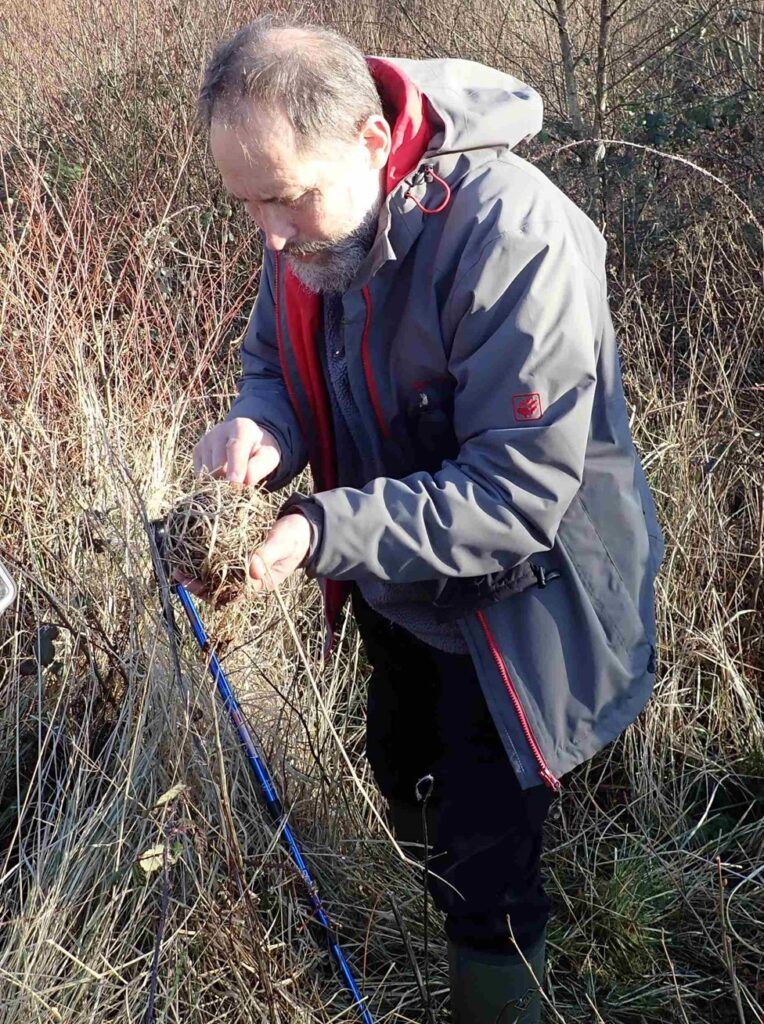
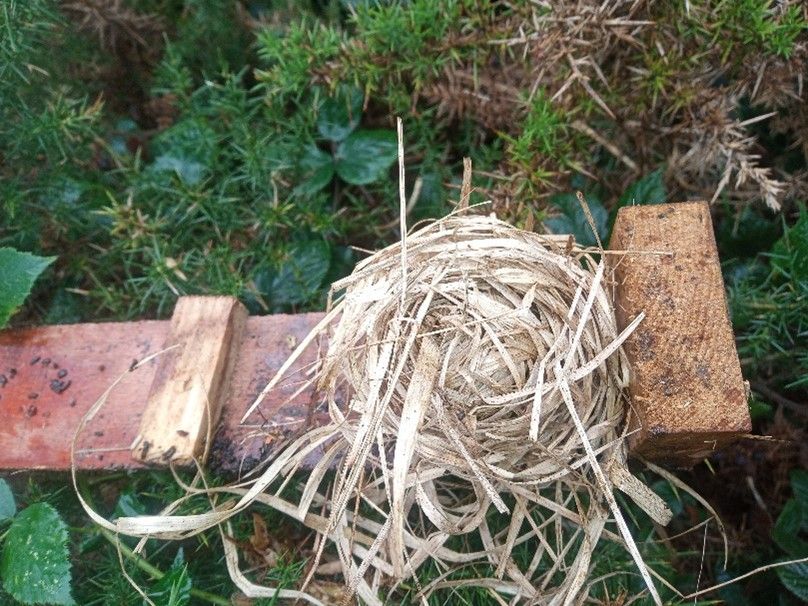
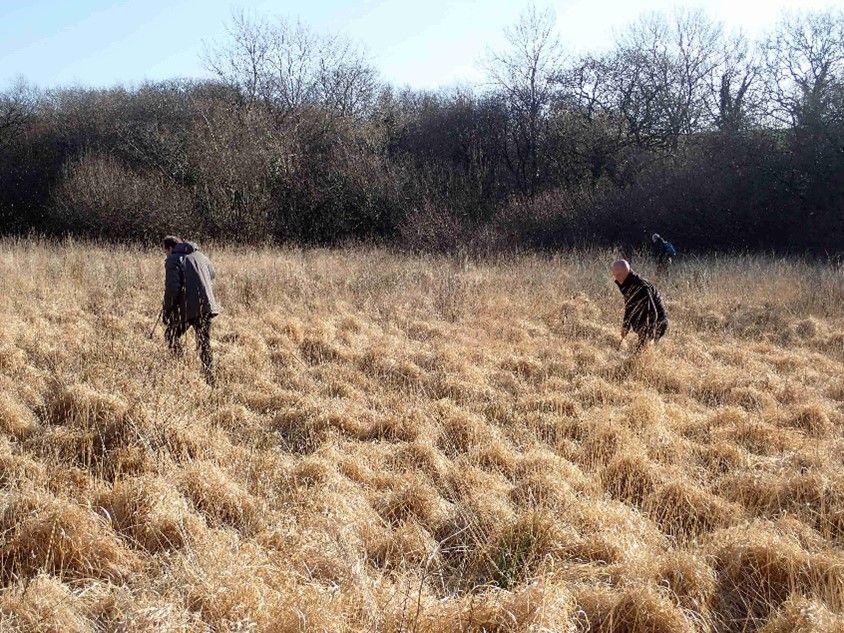
As part of The Mammal Society’s National Harvest Mouse Survey, Cornwall Mammal Group has been searching areas of open grassland, mire and reed bed for the characteristic woven breeding nests of our smallest rodent. The survey’s been carried out over the last two winters, between October and February, and during that time we’ve found over 300 nests, mainly in cocksfoot or purple moor grass tussocks. Harvest mice build two distinctive types of nests. Each animal makes a small shelter which they use for protection from weather and predators. These nests are usually loosely woven grass bundles about 5cm in diameter and found in a range of places, including on the ground or under cover. Breeding nests are much more recognisable structures: spherical or rugby-ball shaped, and tightly woven from broad leaved grasses that have been split longitudinally whilst connected to the living plant and woven into a tight shell. Nests are usually 6-10cm in diameter and are located in the middle of the plant it has been constructed from and in. In cocksfoot the nests are generally 20-30cm from the ground, in common reed they can be a metre or more from the base of the plant.
During the breeding season (May to September), female harvest mice construct new nests for each brood, abandoning both the nest and her weaned family after two weeks. The pups loiter for a further few days before heading off. Since nests are made from living grass they’re very difficult to find during the summer but, as the grass begins to die back, the abandoned nests become more obvious, especially to the trained eye.
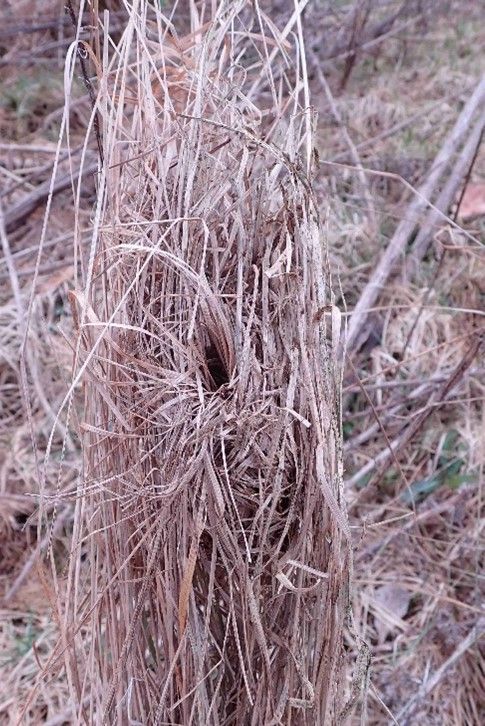
Our standard survey protocols, which focus on larger tussocks of broad-leaved grasses and tend to avoid heavily overgrown or scrubby land, mean that most harvest mouse nests are found in open areas. Other species make similar nests and confusion does occasionally occur. Field vole nests, which are woven into tussocks, are generally larger, much looser in construction and made of short pieces of chewed grass. Critically, they are located at ground level, or sit on the base of the tussock whilst harvest mouse breeding nests are always found within the stalk layer. Weaving the nest from living leaves, harvest mice ensure their nests are wedged securely within the rising stalks. They also resist being removed (by potential predators, adverse weather or an enthusiastic surveyor) because they’re carefully woven into the stems.
Harvest mouse nest from tree guard showing attachment to grasses.
Distinguishing dormouse nests from nests woven by harvest mice
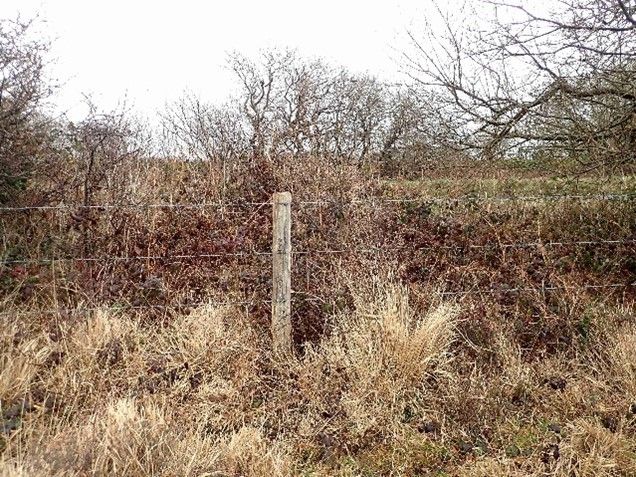

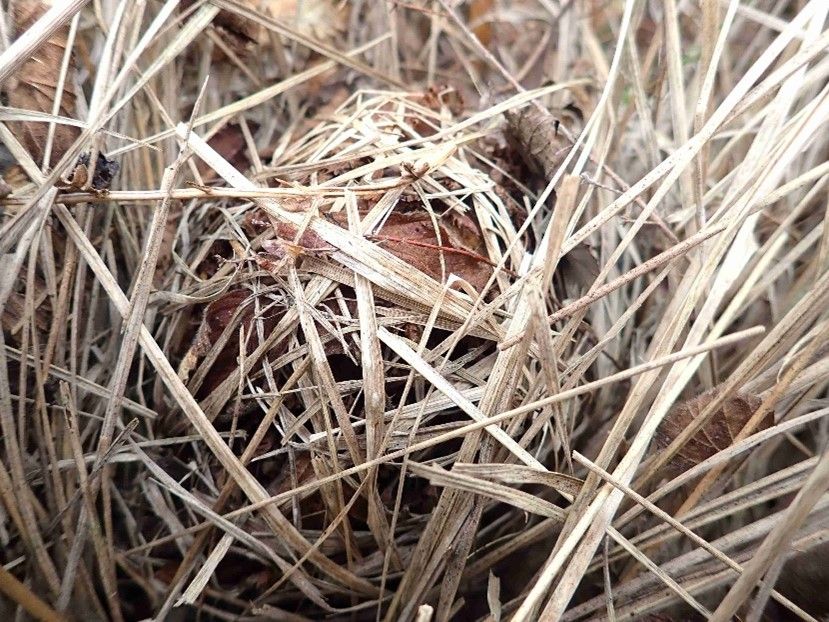
Hazel dormice usually use a variety of materials to build their nests but, in moorland scrub, they have a limited choice and their woven nests of Molinia leaves in nest tubes or boxes can closely resemble harvest mouse nests. Recently, whilst carrying out our harvest mouse nest surveys across the mid-Cornwall moor sites, we found plenty of breeding and day nests. But, in a Molinia-dominated wet mire, we came across two woven nests in tussocks that were larger than the others. These nests were found next to a stock fence which ran adjacent to a road verge on Tregonetha Moor. The hedge line running alongside was little more than a patchy line of scrub, just two metres wide, consisting of a mixture of Molinia, bramble, bracken and gorse with occasional willow and hawthorn bushes, none over four metres tall.
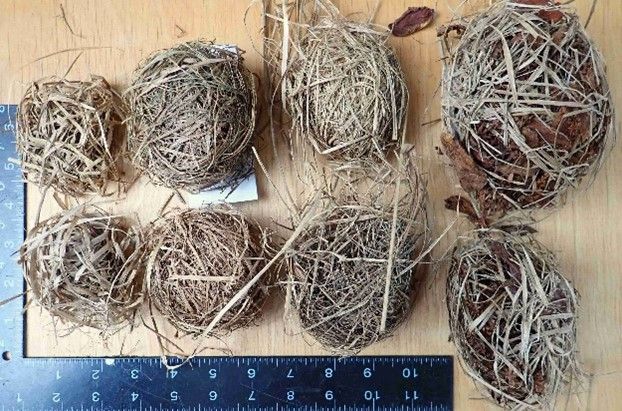
The nests were on the southwestern side of the hedge line, about 12cm in diameter, tightly woven from Molinia leaves and just 20cm from the ground. At first, we thought these were harvest mouse nests but the large size, and the fact they had hawthorn, bramble and bracken leaves woven into the outer layer, was unusual. They were very firm to the touch which was strange because harvest mouse nests are easily compressed. We haven’t had any dormouse records from the site before, but we knew there’d been a cat-kill record just a couple of kilometres away, and a healthy dormouse population in a similar habitat at Goss Moor, three kilometres south.
These gappy, open hedgerows offer relatively little in the way of dense vegetation or protection and the site is very exposed. The Molinia tussocks provided sheltered, secure locations for nest building and, even in late winter, were well protected by the surrounding dead leaves. Sue Eden, Rimvydas Juskaitis and Sven Buchner, who work in Dorset, Lithuania and Germany, have also identified scrub and bramble as popular nest sites for dormice where no large mature trees or dense hedgerows are readily available. Sven and Rimvydas also noted that most nests in these types of sites are no more than 90cm above the ground, and that some summer nests were even found at ground level.
The more we learn about dormice, the more adaptable we discover they are
The more we learn about dormice, the more adaptable we discover they are. Surveyor bias, which leads us to search ‘traditional’ locations, may result in grass nests being overlooked. Our targeted harvest mouse nest surveys are more likely to reveal low grass summer hazel dormouse nests, we just need to remember the key differences: dormouse nests tend to be larger (at least 10cm in diameter), firm to the touch, only loosely attached to the supporting grasses and made of several materials, not just the supporting plant. Harvest mouse breeding nests are smaller, just 8-10 cm in diameter and remain green during the summer as they are constructed from living grasses. In winter, their abandoned nests are easily squashed or compressed and there is resistance if you try and remove them from the supporting plant, because they’re woven into the stems.
Our study shows clearly that hazel dormice occupy what we think of as atypical locations and should be taken into consideration during ecological assessments of rough grassland, low scrub and wet mire habitats within their range.
Written by Dave Groves, Cornwall Mammal Group
Header image credit Coulanges, Shutterstock
